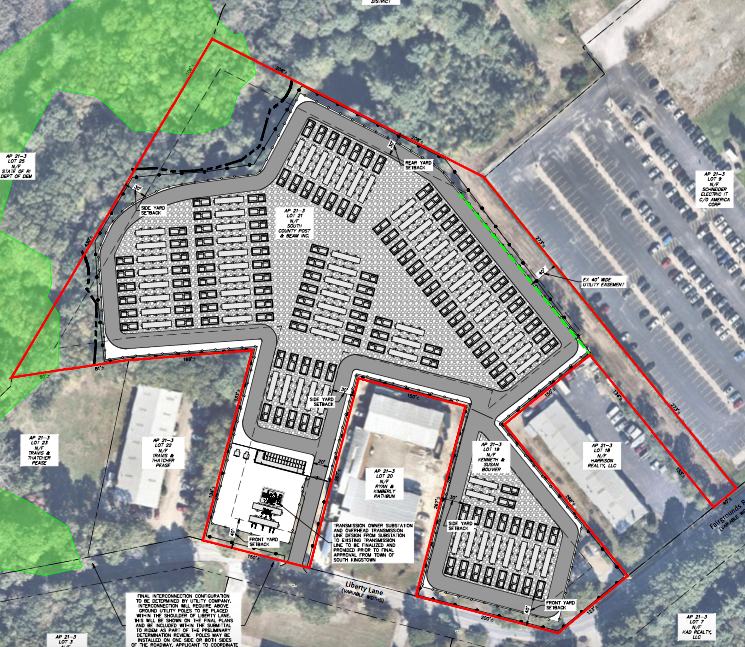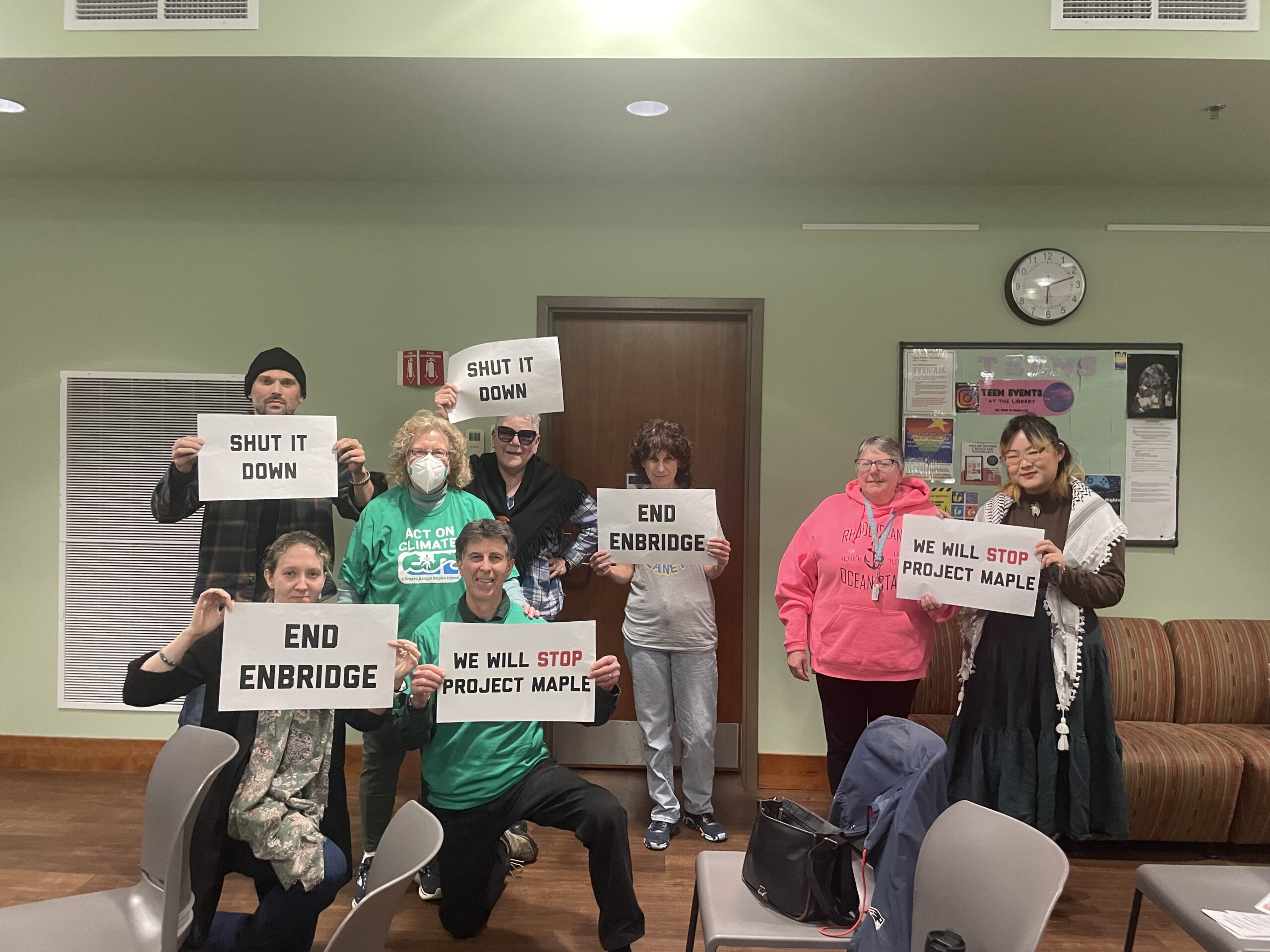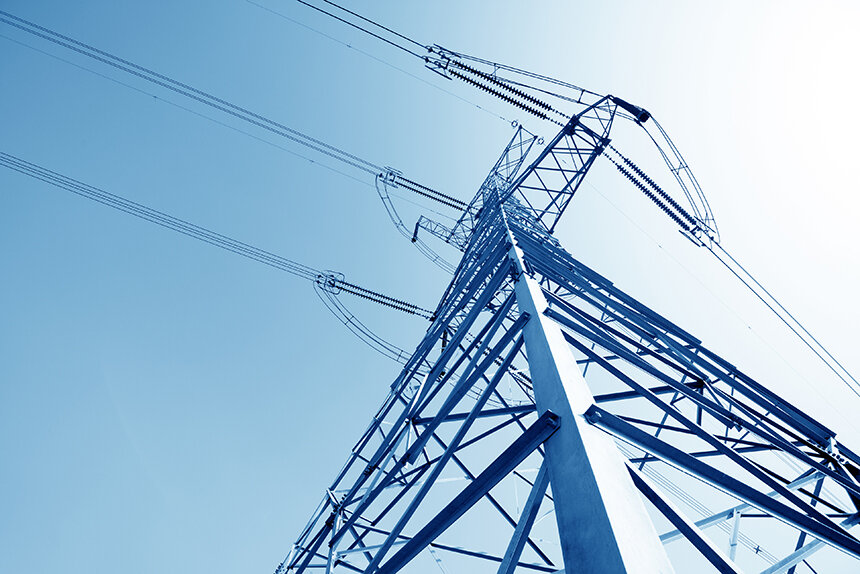Is Proposed Battery Storage Project a Power Plant?
August 19, 2019

WEST KINGSTON, R.I. — Before Rhode Island’s first utility-scale battery storage facility can be built, it must be decided whether the state or town has ultimate say over the project.
At the local level, the town of South Kingstown must figure out if the Narragansett Energy Storage Project can be built on a 7.4-acre site that sits within a drinking water supply area, known as a protected groundwater overlay district.
Forthcoming reviews by the Rhode Island Department of Environmental Management (DEM) and its Division of Agriculture will determine if chemicals used at the lithium-ion battery facility pose a risk to the water supply. Once the opinions are received, the town will begin its review, including a public hearing, for the project proposed on a mostly wooded site near the Kingston train station.
The town’s evaluation, however, may be limited if the state Energy Facility Siting Board (EFSB) decides that the 180-megawatt project is a major energy producer. The EFSB must approve any power plant that generates 40 megawatts or more of electricity. The question is whether the facility technically generates electricity.
The developer, Plus Power, based in San Francisco, has claimed that the project isn’t a power plant, and therefore doesn’t require EFSB review.
The proposed facility will not generate electricity, as it will “merely store and release electricity,” according to a document Plus Power filed with the EFSB.
The EFSB review process is typically longer and more comprehensive than the local permitting process.
Despite the delays for this project, battery storage is considered essential to widespread deployment of renewable energy. Rhode Island and other states hope to achieve climate emission reduction goals by replacing fossil fuel power with thousands of megawatts of wind and solar energy.
Solar and wind power, however, are limited by intermittency, the term that describes gaps in electricity output when the sun isn’t shining and the wind isn’t blowing. Battery storage facilities fill those gaps by taking electricity from the grid when demand is low and power is more plentiful. They return electricity to the system when renewables have reduced output or during power spikes such as heat waves and cold snaps.
Stored power also reduces the reliance on polluting “peaker” power plants that typically run on coal or oil and only operate during high-demand periods.
“Energy storage technology is an important tool in the long-term health of a modern power system,” the Rhode Island Office of Energy Resource (OER) wrote in a July 15 letter of support for excluding the EFSB from the permitting process.
The proposed Narragansett Energy Storage Project is made up of a series of 40-foot shipping containers that hold inverters, transformers, and batteries that store between 3.5 and 4.5 megawatts.
Plus Power says the facility isn’t a power producer and loses between 5 percent and 15 percent of its energy between storage and discharge. The company noted that EFSB regulations don’t name energy storage as a power generator and, despite having the opportunity to do so, the General Assembly hasn’t classified energy storage as a power plant. Therefore, the facility isn’t subject to the same scrutiny as a coal, natural gas, or nuclear power plant, according to Plus Power.
The company said oversight and permitting for the project should be conducted by the local zoning board, state entities such as DEM and the Coastal Resources Management Council, and perhaps the Army Corps of Engineers. The interconnection part of the project, however, will be reviewed by the EFSB and ISO New England to assure that it complies with the regional electric grid.
The Rhode Island Division of Public Utilities and Carriers (DPUC) has agreed that the EFSB has no authority to adjudicate energy storage facilities. In a letter to the EFSB, the DPUC says the lack of explicit reference of energy storage in state law or by the General Assembly means oversight of such facilities can’t be implied in the siting board’s rules.
OER said municipalities should be allowed to decide aesthetics and setbacks from property lines.
“Municipalities are best suited to ensure siting and zoning ordinances for energy storage facilities are consistent with local priorities and aligned with municipal values,” Nick Ucci, OER’s deputy commissioner, wrote in the agency’s letter to the EFSB.
National Grid, which is allowed to own and operate energy storage facilities in Rhode Island, says it also doesn’t want the EFSB to be the permitting entity. The state’s primary electric and gas utility agrees that battery systems only store and release electricity. National Grid also notes that Massachusetts makes a distinction between energy storage and power generation and regulates them independently.
Massachusetts, however, has yet to rule on whether a storage facility should be approved by the state’s energy siting board.
The Massachusetts Energy Facilities Siting Board is currently deciding if it has jurisdiction over the proposed 150-megawatt Cranberry Point Energy Storage Facility in Carver, Mass. The Massachusetts siting board reviews power plants that generate 150 megawatts or more. A decision on the lithium battery storage facility is expected in the coming months.
New York also doesn’t declare whether energy storage is a major power producer, but it does offer guidelines for building a facility.
Regardless of its decision, the EFSB will review the interconnection of a substation used by the proposed energy-storage facility. If the EFSB determines that the project is a major energy producer, then all siting and permitting will be decided by the three-person board.
If built, the Narragansett Energy Storage Project would have an expected life of 20 years. But the operation would continue with the installation of new equipment, according to Plus Power.
Categories
Join the Discussion
View CommentsRelated Stories
Your support keeps our reporters on the environmental beat.
Reader support is at the core of our nonprofit news model. Together, we can keep the environment in the headlines.
We use cookies to improve your experience and deliver personalized content. View Cookie Settings



